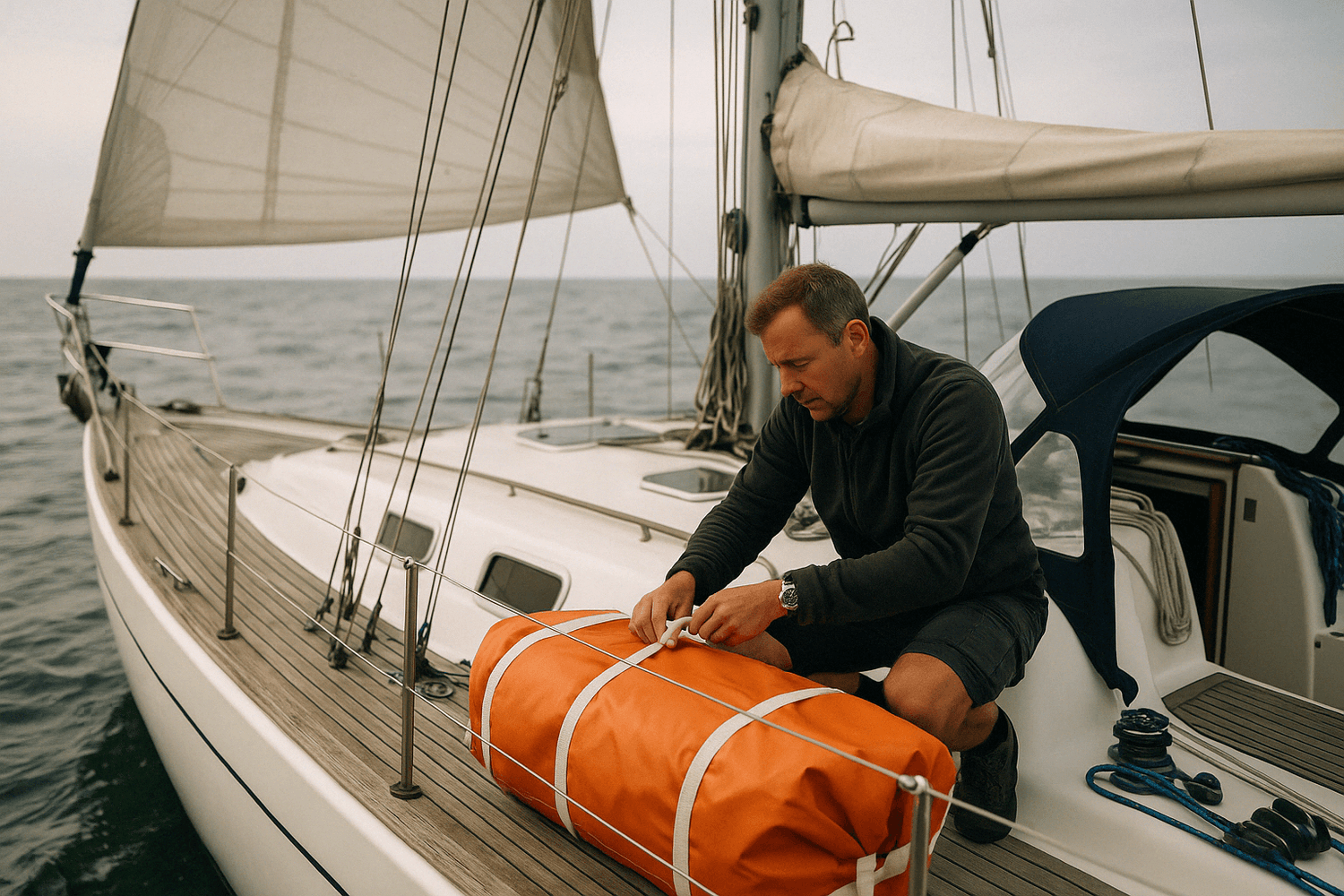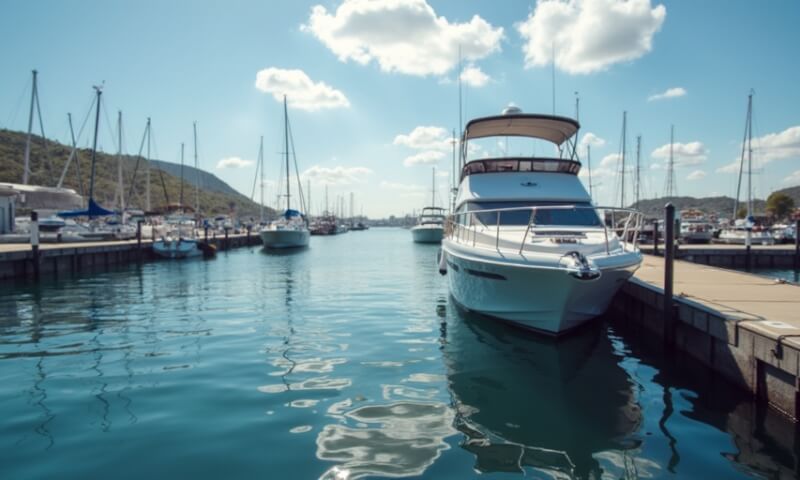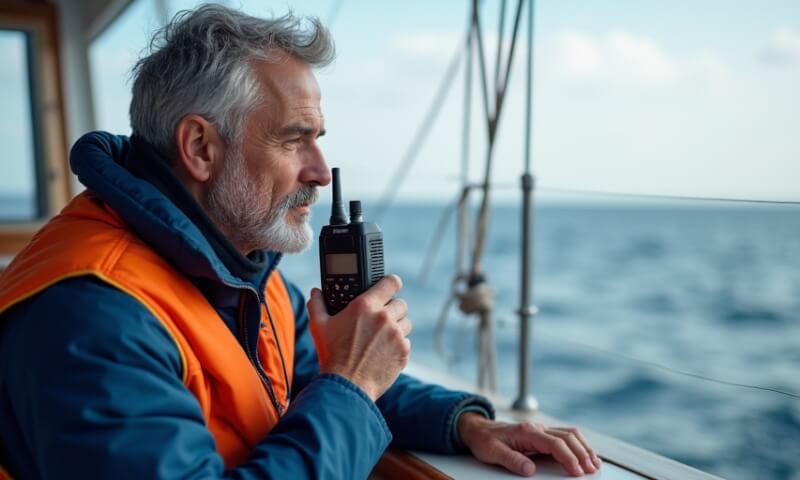Long-distance cruising is one of the most rewarding experiences a sailor can enjoy, but it requires careful preparation and the right gear. Whether you're crossing an ocean or exploring a distant coastline, your equipment can make or break the voyage. In this guide, we cover the essential marine accessories you need to sail safely and comfortably on extended trips.
Preparing Your Boat for Extended Voyages
Before setting off, your boat must be outfitted for both performance and habitability. Long passages test not just your vessel but also your systems—navigation, power, safety, and living. Proper preparation means anticipating problems and having the tools to solve them mid-ocean.
----- 👀 A quick peek below deck…
While you’re reading about boat maintenance and common issues on board, why not take a moment to sneak a peek inside the Easysea community? It’s a free space built for sailors like you—where we talk about real problems, swap smart solutions, and share stories from life at sea. Inside, you’ll find:
⚓ Problems & Solutions – get answers from people who’ve been there.
🧰 Logbook and boat maintenance – see what others are doing to keep their boats in shape.
🌊 Easy Chat – hang out, ask questions, and stay in the loop. 👉 Curious? Hop on board and join us.
It’s free.
Navigation Essentials for Safe Passage
GPS Chartplotters and Backup Devices
Modern GPS chartplotters are indispensable for route planning, tracking, and monitoring weather systems. Brands like Garmin, Raymarine, and B&G offer models tailored for cruisers. But don't rely solely on electronics—always carry a waterproof backup GPS and extra batteries in your ditch bag.
Paper Charts and Compass: Why You Still Need Them
In case of electronic failure, paper charts and a magnetic compass are your best friends. Knowing how to plot a course manually is still a vital skill. Keep your charts updated and protected in a waterproof case.
Safety Gear That Could Save Your Life
EPIRBs and PLBs
Emergency Position Indicating Radio Beacons (EPIRBs) and Personal Locator Beacons (PLBs) are non-negotiable for offshore cruising. In a mayday scenario, they are your primary means of alerting rescue authorities and pinpointing your location.
Life Rafts and Ditch Bags
A well-packed life raft is your last line of defense. Choose one that's inspected, certified, and suited for your crew size. Your ditch bag should include flares, water, first aid, and vital documents—all sealed in waterproof pouches and ready to grab.
Power and Energy Management on Board
Solar Panels and Wind Generators
Energy self-sufficiency is critical. Solar panels provide consistent daytime power, while wind generators offer support during cloudy days or night sails. Mounted correctly, these systems can keep your batteries topped off without the need for a noisy generator.
Marine Battery Banks and Monitoring Systems
A robust battery bank supports all your electronics, lights, pumps, and refrigeration. Use a battery monitor to track usage and detect issues before they become critical. Lithium options are becoming popular for their capacity and longevity.
Comfort and Liveaboard Necessities
Watermakers and Filtration Systems
Fresh water is life. A watermaker allows you to convert seawater into potable water daily, a game changer for long passages. Combine it with a filtration system to ensure every drop is clean and safe to drink.
Galley Tools and Storage Solutions
From a pressure cooker to a reliable gimbaled stove, your galley should be functional under way. Invest in nested cookware, latching drawers, and vacuum-sealed food storage to reduce space and increase shelf life.
Communication Equipment for Offshore Cruising
Staying connected offshore is vital for weather updates and emergency coordination. A satellite phone, SSB radio, or a device like the Iridium GO! lets you receive GRIB files, text ashore, or send position updates. Don't rely on coastal cell coverage—it won’t be there when you need it.
Final Tips: Prioritizing Quality, Safety, and Redundancy
When outfitting for long-distance cruising, prioritize gear that is:
Reliable (test everything before departure)
Redundant (backup systems for navigation, water, and communication)
Compact and durable (space-saving, seaworthy, and low-maintenance)
Long cruising is a blend of adventure, patience, and preparation. The right accessories will help you sail further, safer, and with greater peace of mind.





Leave a comment
This site is protected by hCaptcha and the hCaptcha Privacy Policy and Terms of Service apply.